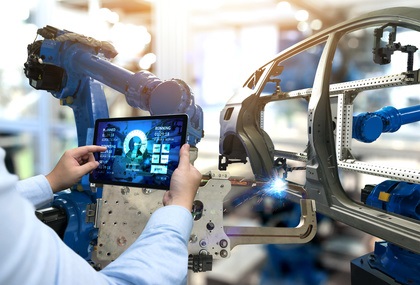13 November 2018
Here Sassda’s Western Cape Regional Manager Michel Basson gives an analysis of what the 4th Industrial Revolution really means for the South African stainless steel sector. In it he states; “The Fourth Industrial Revolution is not looming, it is already upon us” and asks will South Africa have the skillset to compete…?

The South African future landscape has the potential to change dramatically depending on our achieved economic growth with the resultant job and wealth creation and it would seem that the so-called Fourth Industrial Revolution offers the vehicle to this bright future. The true potential of this most recent revolution is the fact that this future is rather undefined and therefore limitless. In a sense, it resembles a fresh opportunity for the South African future should we be prepared to take full advantage. The Fourth Industrial Revolution is not looming, it is already upon us. In order to judge our own readiness, it is important to understand how South Africa used opportunities offered by the three previous revolutions.
Industrial revolutions: a brief history
The First Industrial Revolution took place from the 18th to 19th centuries in Europe and America. It was a period when mostly agrarian, rural societies became industrial and urban. The iron and textile industries, along with the development of the steam engine, played central roles in the Industrial Revolution. In South Africa, the discovery of minerals in the late nineteenth century – diamonds in 1867 and gold in 1886 – dramatically changed the economic and political structure of southern Africa. South Africa had an extremely valuable resource that attracted foreign capital and large-scale immigration. Discoveries of gold and diamonds in South Africa exceeded those in any other part of the world, and more foreign capital had been invested in South Africa than in the rest of Africa combined.
The Second Industrial Revolution took place between 1870 and 1914, just before World War I. It was a period of growth for pre-existing industries and expansion of new ones, such as steel, oil and electricity, and used electric power to create mass production. Major technological advances during this period included the telephone, light bulb, phonograph and the internal combustion engine.
South Africa’s industrialization has from the outset depended on what some refer to as the Minerals-Energy Complex. From the 1920’s state corporations in electricity, steel and transport combined with private mining conglomerates to build an economy based around the extraction of minerals using cheap forms of energy. To make it all work, apartheid policies ensured the supply of cheap and compliant black labour. None of the underlying assumptions that drove capital accumulation in apartheid South Africa exist anymore.
Post 1994, South Africa has been undergoing a process of de-industrialisation – even if the economy as a whole has grown This is important because a recent study by the well-known Harvard bases economist Dani Rodrik entitled “Premature de-industrialization” shows that South Africa joins a club of other developing nations which are de-industrialising before they become rich developed economies. Manufacturing, he argues, drives labour productivity, is able to absorb significant quantities of unskilled labour and as it is a tradable sector, it can expand via exports even if the rest of the economy cannot absorb what is manufactured. In short, other than a few exceptions, manufacturing is an escalator and the main channel through which rapid economic growth has taken place in other developed countries in the past. His data shows that employment in South Africa’s manufacturing sector peaked in 1981. Since then it has been in decline. In the absence of the traditional manufacturing route, economic growth in developing countries are driven by capital inflows, external transfers, or commodity booms which are often not sustainable. As the country moved into the next revolution, some services such as IT are tradable but are typically highly skill-intensive without the capacity to absorb the type of labour that low and middle-income economies have.
The Third Industrial Revolution, or the Digital Revolution, refers to the advancement of technology from analog electronic and mechanical devices to the digital technology available today. The era started during the 1980s and is ongoing. Advancements during the Third Industrial Revolution include the personal computer, the internet, and information and communications technology (ICT).

